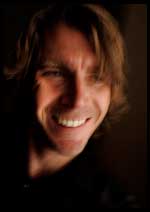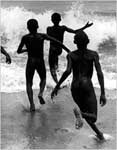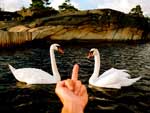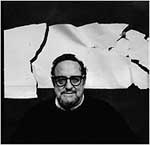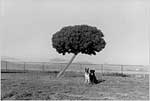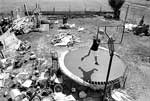SF Chronicle:
The photographs themselves, to my eyes, are more troublesome. The bodies on view, to a one, are all youthful, fit and lean. A warm bronze light prevails. But, somehow, in all this celebration of the body beautiful, there’s a nagging vacancy — in the models’ abstracted expressions and a slack structure and framing of the scenes. The elaborate picnic table shot seems artily contrived. So does the one of the two boys on the deck. Sturges’ photos have always looked a little stagey and arch to me, a little too studied in their bucolic innocence — of doorframe poses, riverside sun bathing or dogs casually flopped down at the feet of statuesque nudes.
Color presents fresh complications. Color literalizes, as it spells out every limb, hair and nipple in realistic, high-resolution detail. It challenges a photographer even more to discover an essence, to make us see the thing that’s plainly there but that we might not otherwise have registered. Sturges’ photographs just don’t do that very much. There’s something coy, whether by intention or not, about the way they invite us to puzzle out their meanings and then so consistently resist that kind of looking.
It’s not that Sturges exploits his subjects. Nothing in his work or history proves it. But he does expose them, without exposing much of anything about them. You don’t feel drawn into the mystery and wonder of the nudes he photographs. You see them and move on to the next and the next. Maybe Sturges just isn’t an especially good photographer — a possibility that he himself readily acknowledges. That doesn’t make him a pornographer by default. But it might make him a kind of poster boy for the dilemmas of photographic imagery in the Internet age. In the forthright yet strangely blank nature of his work, in its uncensored volume and digital technologies, Sturges presents the reflective image of a computer screen. Here, here it all is, his photographs say to us. Make what you will of them. That’s your private business, not mine.
Here.





